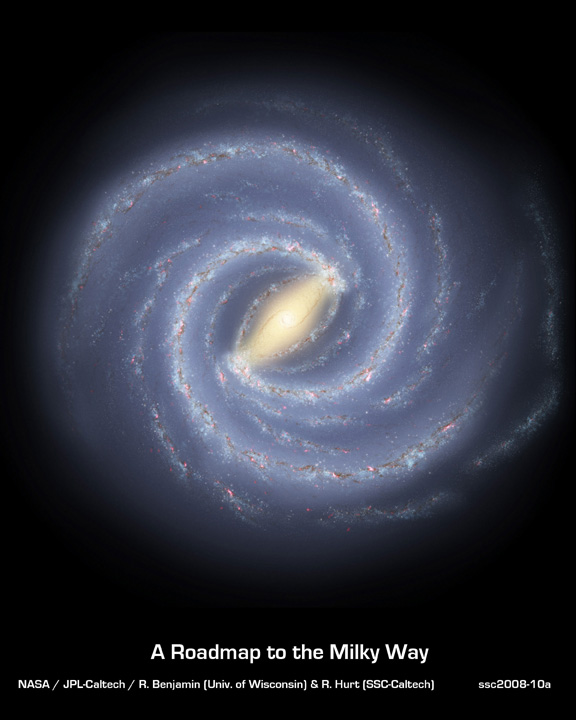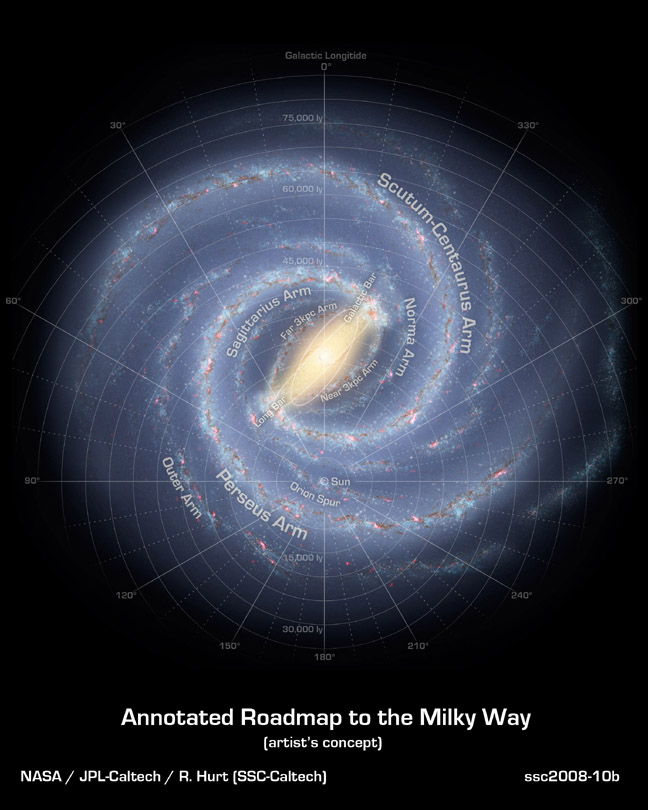Image List
-

Astronomers Tom Dame and Patrick Thaddeus have found evidence for a far-side counterpart to the expanding 3-kiloparsec spiral arm near the center of the Milky Way. The new arm is a virtual twin to the near arm, which was found 50 years ago. The inner Milky Way therefore shows a beautiful symmetry.
Tom Dame (Harvard-Smithsonian CfA) -

This artist's concept illustrates the latest view of the Milky Way's structure. The galaxy's two major arms (Scutum-Centaurus and Perseus) can be seen attached to the ends of a thick central bar, while the two now-demoted minor arms (Norma and Sagittarius) are less distinct and located between the major arms. The major arms consist of the highest densities of both young and old stars; the minor arms are primarily filled with gas and pockets of star-forming activity. The artist's concept also includes a new spiral arm, called the "Far 3-kiloparsec arm," discovered via a radio-telescope survey of gas in the Milky Way. This arm is shorter than the two major arms and lies along the bar of the galaxy. It is a virtual twin to the well-known "Expanding 3-kiloparsec arm" on the near side of the galactic center.
Robert Hurt (SSC/JPL/Caltech) -

This artist's concept illustrates the latest view of the Milky Way's structure. The galaxy's two major arms (Scutum-Centaurus and Perseus) can be seen attached to the ends of a thick central bar, while the two now-demoted minor arms (Norma and Sagittarius) are less distinct and located between the major arms. The major arms consist of the highest densities of both young and old stars; the minor arms are primarily filled with gas and pockets of star-forming activity. The artist's concept also includes a new spiral arm, called the "Far 3-kiloparsec arm," discovered via a radio-telescope survey of gas in the Milky Way. This arm is shorter than the two major arms and lies along the bar of the galaxy. It is a virtual twin to the well-known "Expanding 3-kiloparsec arm" on the near side of the galactic center.
Robert Hurt (SSC/JPL/Caltech)